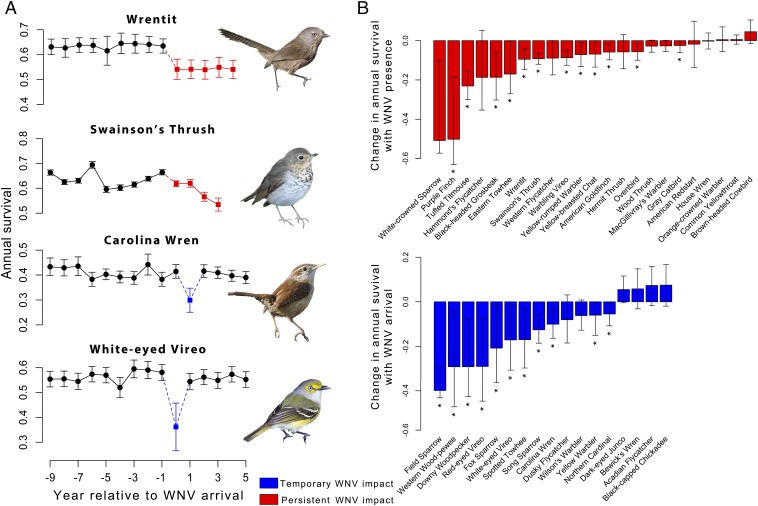Fig. 1.
The effects of WNV on landbird species across the continental United States. (A) Examples of temporary and persistent effects of WNV on model-averaged estimates of annual survival. In some species, such as the wrentit and Swainson’s thrush, survival decreased (red) after the arrival of WNV, and remained low in subsequent years. In other species, such as the Carolina wren and white-eyed vireo, survival was reduced during the year of WNV arrival (blue), followed by recovery in subsequent years despite the disease persisting in the community (Materials and Methods). The year that WNV affected survival varied between species when the top-ranked model included a 1-y lag (Carolina wren). Time series were shorter for species where the majority of individuals were captured in the western United States where WNV arrived later (Swainson’s thrush). Photos courtesy of (Top to Bottom) Harjeet Randhawa, Brian Plunkett, Nathan Corry, and Jacob Spendelow. (B) Change in annual survival because of WNV from top-ranked models for 40 landbird species (9 species did not have a WNV covariate in the top survival model). Species are shown as being affected by either the continued presence (red) or the arrival (blue) of WNV based on which variable was in the top-ranked model describing annual survival. Bars represent confidence intervals (±95%), and asterisks indicate a significant effect (P < 0.05) of WNV on survival.

